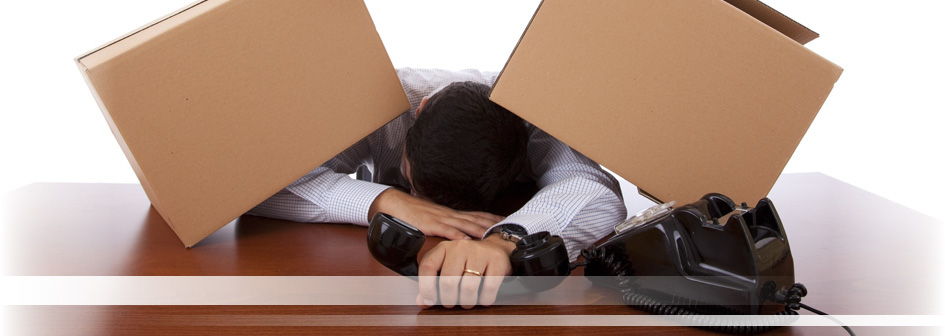Demystify the bed and mattress moving process now
Posted on 20/06/2025
Demystify the Bed and Mattress Moving Process Now: The Ultimate Guide
Moving houses can be both an exciting and stressful time, and one task that often causes the most apprehension is handling your bed and mattress. These are heavy, bulky, and can be surprisingly easy to damage or soil if not dealt with correctly. Whether you're moving across town or cross-country, knowing how to move a bed and mattress with ease can make the whole process much smoother. In this comprehensive article, we'll demystify the bed and mattress moving process step-by-step, ensuring your valuable sleep system arrives safely at your new home.
Why Is Moving a Bed and Mattress So Challenging?
Your bed and mattress are some of the largest items found in a home. Moving them poses unique challenges because:
- Size and weight: Mattresses can be unwieldy and beds often have large, awkward frames.
- Delicacy: Both beds and mattresses need to be handled with care to avoid breaking frames or damaging the mattress fabric and support.
- Cleanliness: Mattresses, especially, can become soiled or infested with pests if not moved correctly.
- Reassembly: Most bed frames require disassembly and reassembly, which can be complex without proper preparation.
Understanding these challenges is the first step toward mastering the bed and mattress moving process. With the right preparation and tools, you can protect your investment and make relocation far less daunting.

Preparation: Laying the Groundwork for Success
Measure Everything
Before moving your bedding, carefully measure:
- Your mattress (length, width, depth)
- The dimensions of your bed frame (if not disassembling completely)
- Doorways, stairwells, and hallways along your moving path
These measurements supply crucial information, ensuring you'll be able to maneuver the items without damaging property or getting stuck.
Gather the Right Tools and Materials
Efficiently moving your mattress and bed requires the right equipment. Arm yourself with:
- Mattress bags: Keep your mattress clean, dry, and protected from pests.
- Moving blankets: Provide further protection for frames and headboards.
- Bubble wrap: Safeguards delicate components like ornate headboards or slats.
- Furniture sliders or dollies: Make heavy lifting easier and reduce the risk of injury or floor scratches.
- Wrench and screwdriver set: Essential for disassembling and reassembling the bedframe.
- Labels or bags for screws and bolts: Stay organized during the process.
- High-quality packing tape and ratchet straps: Secure everything during transport.
Step-by-Step Guide to Moving a Bed and Mattress
1. Strip and Clean Bedding
Remove all bedding, comforters, pillows, and mattress toppers. Launder these before packing them in clean plastic bags or boxes to keep them fresh and dust-free during the move.
2. Disassemble the Bed Frame
Most bed frames are easier to transport when disassembled. Here's how to do it safely:
- Refer to the manufacturer's manual for specific instructions.
- Take photos before and during disassembly to simplify reassembly later.
- Keep all screws, bolts, and nuts in labeled bags and tape them to the frame's largest part.
- Wrap headboards, footboards, and side rails in moving blankets and secure with tape.
Tip: If your bed frame is antique, ornate, or especially valuable, consider extra padding and caution.
3. Prepare the Mattress
Many people are unsure how to protect a mattress during a move. Here's how to move your mattress like a pro:
- Vacuum both sides of your mattress to remove debris, dust, and allergens.
- Slide the mattress into a protective mattress bag. Seal tightly using packing tape, especially around openings, to guard against dirt and moisture.
- For memory foam or hybrid mattresses, keep them flat during the move if possible, to prevent damage to the internal structure. Coil spring mattresses can sometimes be safely transported on their side for short periods.
Never fold or sharply bend any mattress unless the manufacturer specifically says it is foldable; doing so can permanently damage the mattress.
4. The Best Way to Carry and Move a Mattress
- Lift from the sides with a partner--never drag the mattress across floors, which causes wear and potential damage.
- Consider using mattress moving straps or harnesses for better support and control during lifting.
- Watch for low ceilings, banisters, and light fixtures!
5. Getting to the Moving Truck
Gently load both the mattress and all disassembled bed parts onto a dolly for transport out of the home. If stairs are involved, use an extra person for guidance and control.
- The mattress should be laid flat if possible inside the vehicle (especially for memory foam or latex types).
- If vertical placement is necessary due to limited space, ensure it is securely strapped and cannot slump or bend during transit.
- Make sure headboards and exposed wood or upholstery are protected with blankets and kept away from sharp or heavy objects that could cause dents or scratches.
Special Considerations Based on Mattress and Bed Type
Moving Memory Foam, Latex, and Hybrid Mattresses
These contain foams and support layers that can be ruined by folding or prolonged vertical storage. Always move them flat and avoid compressing tightly when possible.
Traditional Innerspring Mattresses
These are generally sturdier, but can still become warped if sat on edge for long periods or mishandled. For short moves, standing on edge is typically fine, but for longer trips, laying flat is always best.
Platform Beds and Adjustable Bases
- Disassemble as fully as possible. Keep track of all moving parts and follow the manufacturer's guide.
- Adjustable bases may be heavy and complex--professional movers may be beneficial here.
DIY vs. Professional Movers: Which Should You Choose?
Should you tackle moving your bed and mattress on your own or call in professional help? The answer depends on:
- Your budget
- Distance of the move
- The size and weight of your bed system
- Number of helpers available
- Time constraints
- DIY Moving: Best for local, short-distance moves, with ample help and proper transport. Cost-effective but more labor-intensive.
- Professional Movers: A wise choice for long-distance or complex moves, bulky king-size beds, or if you lack the time/inclination for heavy lifting. They offer insurance and specialized equipment.
Tips for Moving a Bed and Mattress Through Tight Spaces
Demystifying the navigation challenge! Tight hallways, narrow doors, and awkward staircases needn't spell disaster:
- Measure everything twice. Remove doors from hinges for a few extra inches of clearance if needed.
- Carry mattress and frame components vertically when possible to reduce the footprint.
- Protect both your bed and the walls with blankets or foam padding to avoid scrapes and dents.
- Recruit enough helpers--never risk injury over rushing.
Frequently Asked Questions
How do I keep my mattress clean during a move?
Always use a sealed mattress bag, and avoid dragging the item or placing it on dirty surfaces. Doing so keeps it free from stains, dust, and pests. For extra protection, wrap a clean blanket around the bag.
Can I bend or fold my mattress to fit it in my car?
Except for certain foldable mattresses, nearly all should not be bent or sharply folded. This can irreparably damage the internal support. If transport in a flat position isn't possible, consult your mattress manufacturer.
Is it possible to move a bed and mattress without help?
While it's technically possible, it's seldom advisable. These items are awkward and heavy; improper lifting can result in back injuries or property damage. Always seek help for safety.
What's the best way to reassemble my bed?
Refer to any photographs or instructions taken during disassembly. Sort screws and hardware carefully, and assemble on a clean, flat surface. Take your time--rushed reassembly can result in future squeaks or instability.
How to Safely Store Mattresses and Bed Frames
Sometimes, your furniture may need to be stored during a move. Here's how to ensure they come out in perfect condition:
- Mattresses: Always store flat to prevent sagging. In a climate-controlled space, keep the protective mattress bag on until you are ready to use it again.
- Bed frames: Keep all parts together, labeled, and wrapped. Store away from ground moisture and avoid stacking heavy items on top.

Common Mistakes to Avoid When Moving Your Bed and Mattress
- Skipping measurements: Don't eyeball it--always measure!
- Not using proper protection: Lack of a mattress bag or blankets can result in rips, tears, stains, and pests.
- Poor lifting techniques: Lift with your legs, not your back. Get help to avoid injuries.
- Disorganization: Losing screws and small parts will make reassembly a nightmare. Stay organized.
- Ignoring manufacturer's instructions: Bed frames, especially, can have intricate mechanisms. Always review the manufacturer's guide.
Summary: Demystify the Bed and Mattress Moving Process Now
By following this definitive guide, you'll find the process of moving your bed and mattress simple, safe, and efficient. Preparation is paramount--right down to measurements and protective covers. With proper equipment, organization, and teamwork, you'll conquer the unique challenges of transporting your sleep sanctuary, ensuring it brings you comfort for many nights to come.
When you demystify the bed and mattress moving process now, you're not just simplifying your move--you're protecting your investment and ensuring a flawless transition to your new home. Safe moving!








